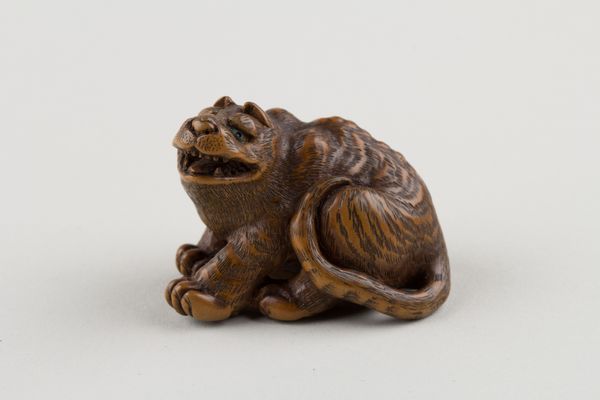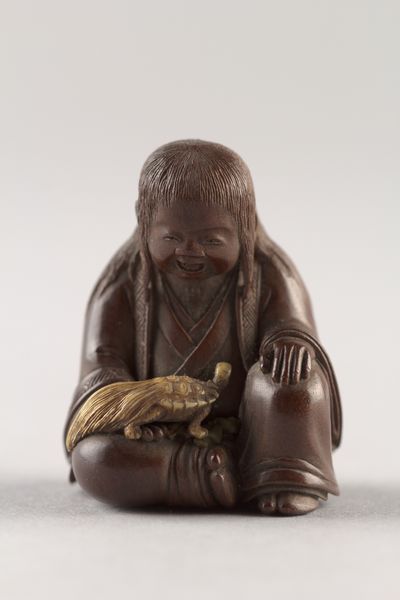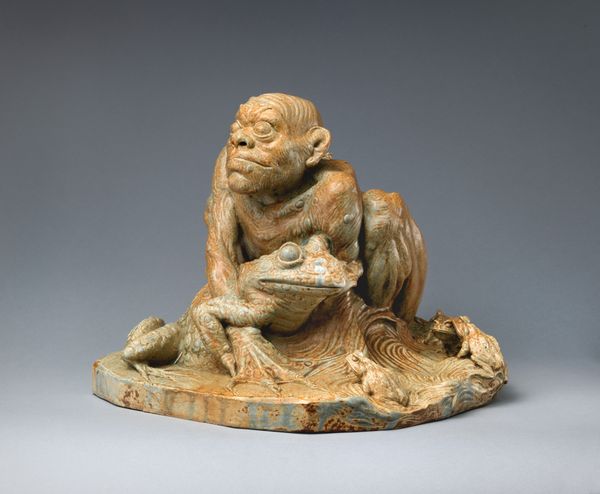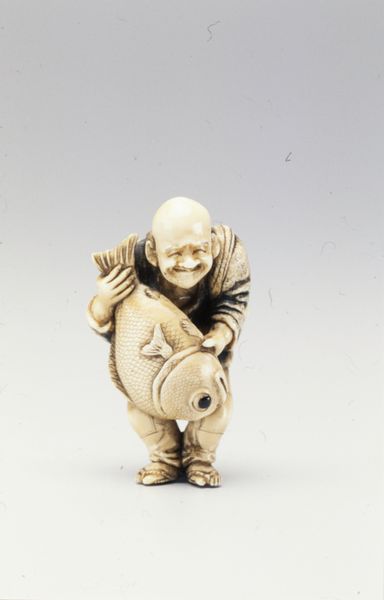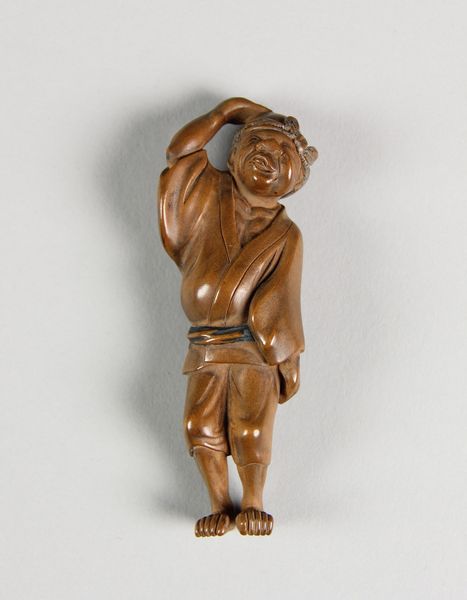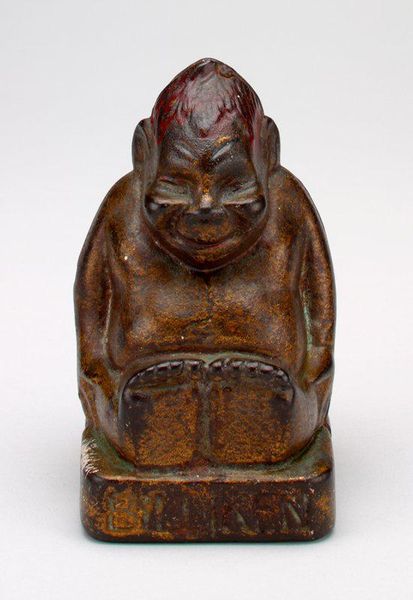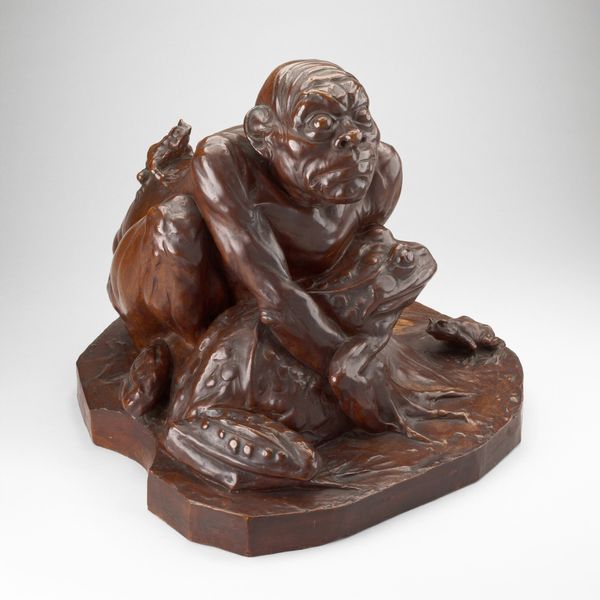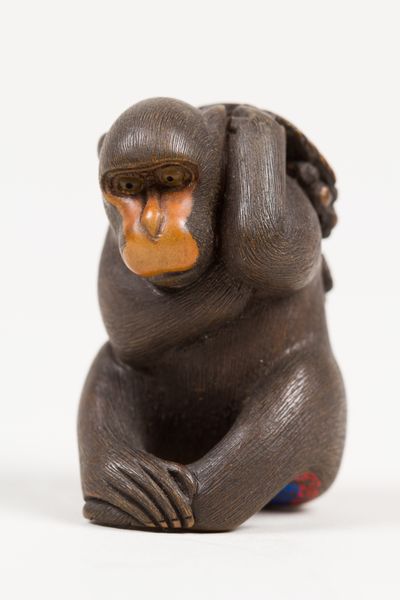
sculpture, wood
#
portrait
#
asian-art
#
ukiyo-e
#
figuration
#
sculpture
#
men
#
wood
#
animal drawing portrait
#
miniature
Dimensions: H. 2 3/4 in. (7 cm); W. 1 in. (2.5 cm); D. 1 1/4 in. (3.2 cm)
Copyright: Public Domain
Editor: So, we have here a wooden sculpture titled "Daoist Immortal Tekkai," made sometime between 1767 and 1833 by Chikusai. The detail on such a small piece is astonishing, really. I’m struck by the way the artist managed to convey so much character in the figure's face. What can you tell me about this piece? Curator: Let's focus on the wood itself. What kind of wood, where was it sourced? The type of tools employed, were they common or specialized for such miniature work? Understanding the cost and availability of these materials helps us place this sculpture within its economic context. Is this a piece made for elite consumption or was it made by a netsuke carver for a more everyday clientele? Editor: That’s a really interesting point. I hadn’t thought about the economics of it. The netsuke aspect makes it seem possibly for everyday use, since I recall these were toggles for holding small pouches... Curator: Exactly! And considering the subject matter – Tekkai, a Daoist immortal known for his ability to project his soul – how does the *making* of such an object affect its spiritual value? Was the act of carving itself a devotional practice? Is there something particularly *Japanese* in creating value within useful but seemingly unimportant handmade objects like this netsuke? Editor: I see, it reframes the artistry, and perhaps adds to the understanding of religious folk traditions of the time. So the selection of materials and methods used for creation can show class associations, levels of skill, and potential layers of symbolism. Curator: Precisely. Think about the labor, the consumption, the cultural beliefs intertwined with this small piece of carved wood. That tells us a great deal about its place in the world. Editor: I never considered the labor aspect so intrinsically tied to a work's value before, but it's changed my perspective. Thank you.
Comments
No comments
Be the first to comment and join the conversation on the ultimate creative platform.
